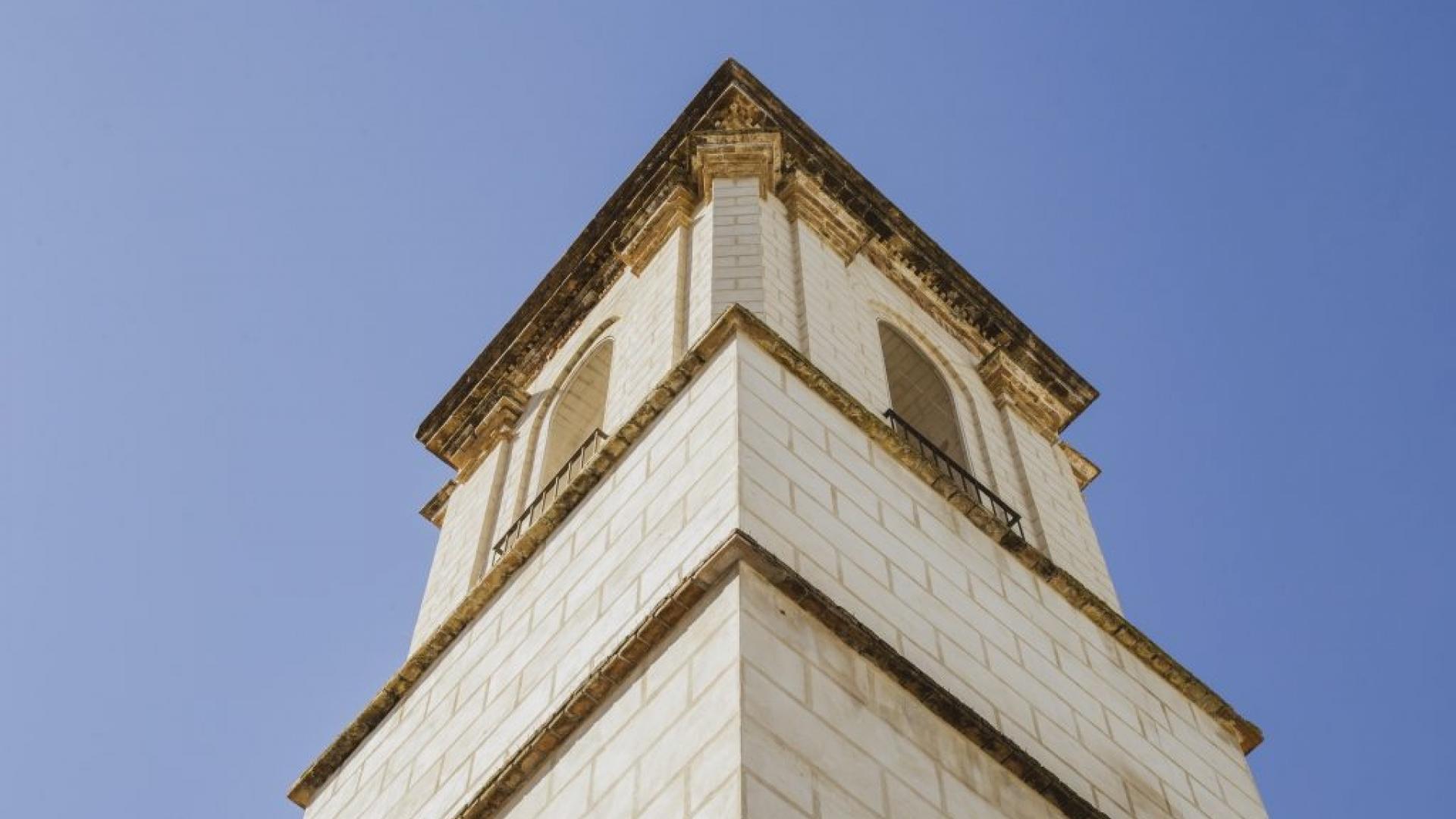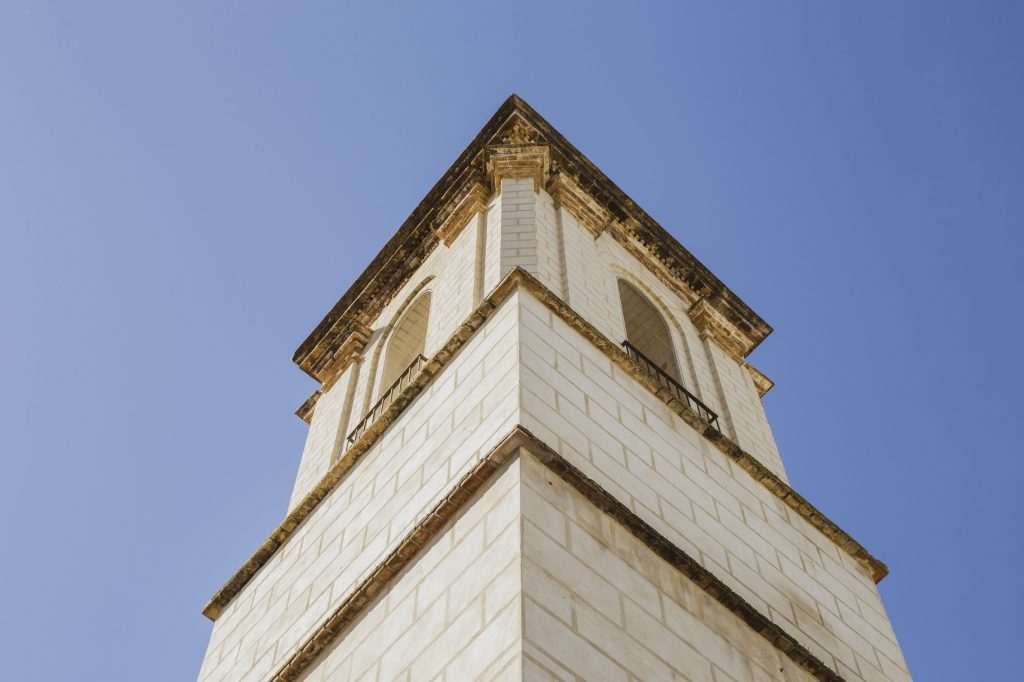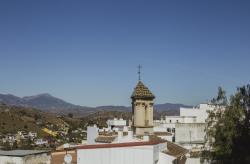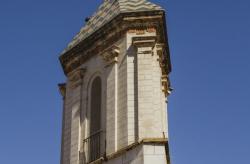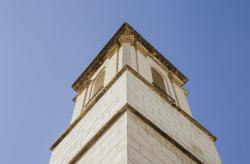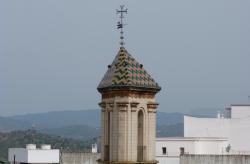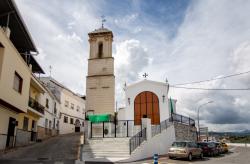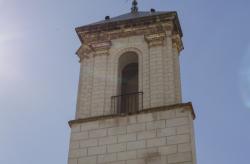TOWER OF THE TRINITARIANS
This tower is the only preserved remains of the old convent of the Trinitarians, a work from the 17th century.
It presents the particularity of its triangular plan, raising two bodies as a base and a third, that of bells, with chamfered corners. In this third body, semicircular arches open between pilasters topped with a Doric entablature that receives the spire of ceramic scales. The triangular plant refers to the Holy Trinity, although there are other elements in the weather vane related to the Trinitarian order such as chains, the deer and the cross.
Historical facts
Some Trinidadian friars, who were installed in the hermitage of Sta. María de los Ángeles located on the outskirts of the town, moved in the mid-seventeenth century to the old hermitage of Vera Cruz, located on this street, where they established the new convent.
Much of the work on the church and convent was due to a Trinitarian friar, Fray Martín de San Román, and dates from the second half of the 17th century.
The Trinitarian order abandoned the convent in the 19th century and a few years later it was disentailed, passing into private hands. Already in the 20th century, the Franciscan friars, dedicated to teaching, took charge of it.
Part of the church collapsed after the Spanish Civil War, which caused the complete demolition of the property. At the end of the 1960s, the convent was demolished, leaving only the tower standing since then.
| Attachment | Size |
|---|---|
| TORRE DE LOS TRINITARIOS | 2.38 MB |
| TOWER OF THE TRINITARIANS | 2.27 MB |
